
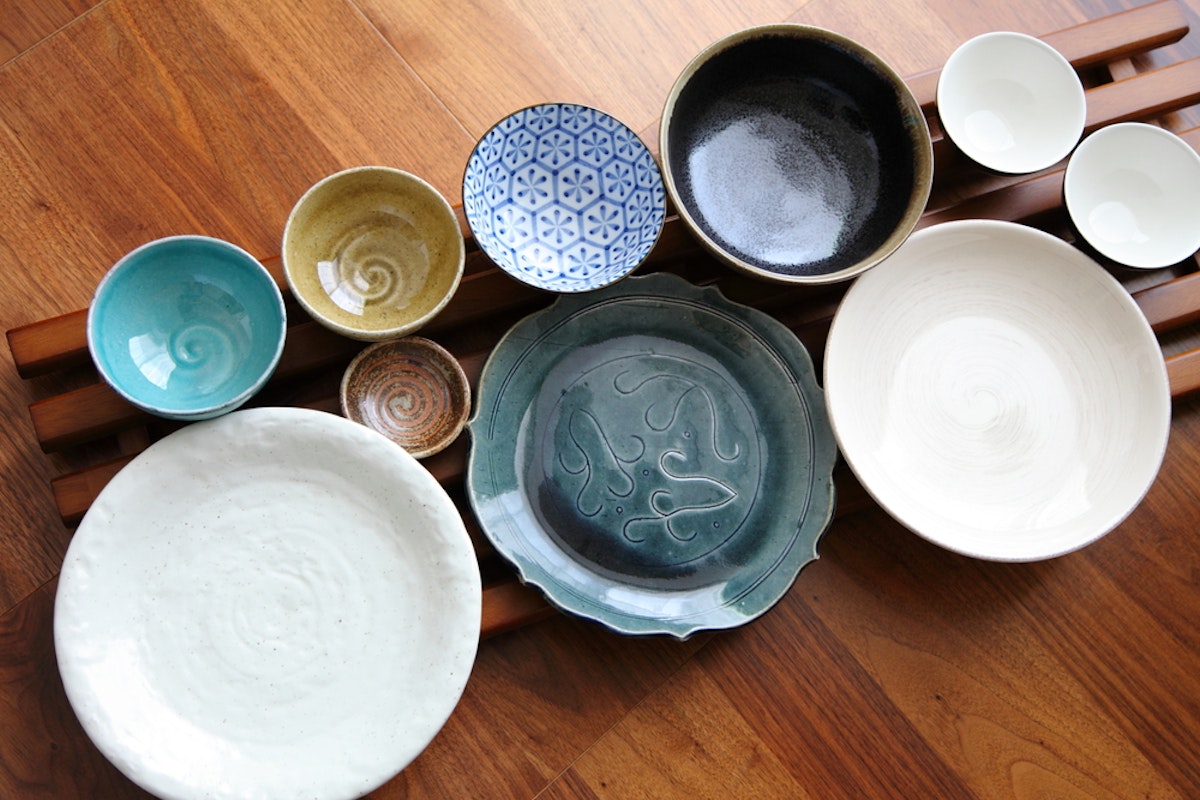
The art of Japanese pottery, known as Yakimono, is a richly woven tapestry of history, culture, and technical mastery. It stands as a testament to Japan's long-standing tradition of meticulous craftsmanship and profound respect for nature. From the ancient Jomon period, which dates back to 14,500 B.C., to the contemporary Raku and Celadon styles, Japanese pottery is a fascinating journey through time, reflecting the evolution of Japanese aesthetics and philosophy. In this guide, we will delve into the historical significance, distinct styles, and intricate techniques that define this revered art form.
Japanese pottery is not just about creating functional objects; it is an embodiment of Japan's unique worldview, where beauty is found in simplicity and imperfection. Each pottery piece tells a story - of the artist's skill, the region's characteristics, and the era's cultural context.
Whether you're an avid collector, an aspiring potter, or simply an enthusiast of Japanese art and culture, understanding the nuances of Japanese pottery can open up a new perspective on its value and allure. Join us as we explore the dynamic world of Yakimono, its timeless appeal, and its continued influence on modern ceramics.
To understand Japanese pottery in its entirety, we must voyage through the 'Six Ancient Kilns' of Japan. These pivotal pottery-producing regions, namely Bizen, Echizen, Seto, Shigaraki, Tamba-Tachikui, and Tokoname, have stood the test of time, making pottery for over a thousand years. The unique styles and techniques of each kiln, born out of local traditions and resources, have played a crucial role in shaping the nation's ceramic heritage.
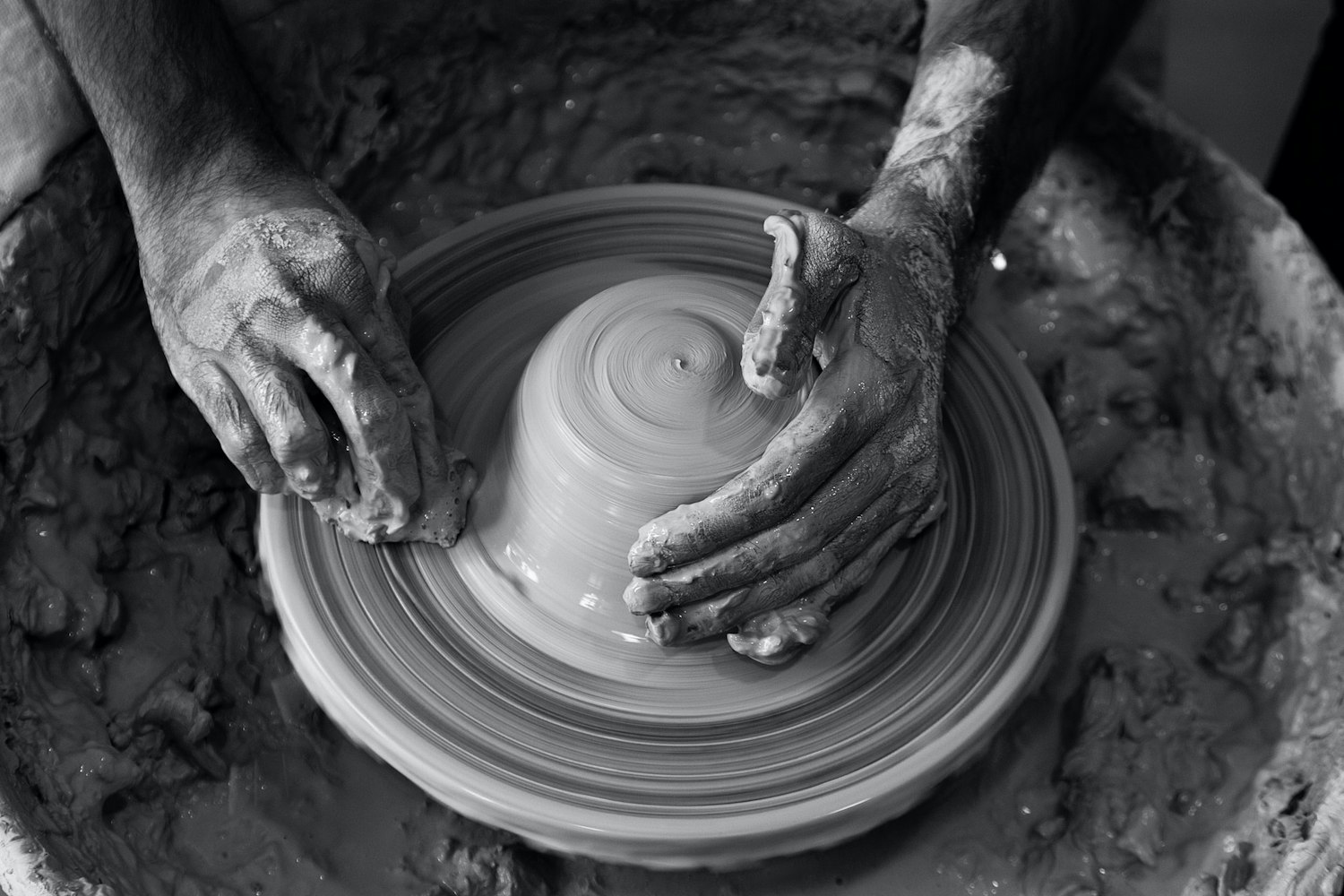
Venture first to Seto, nestled in the heart of Japan near Nagoya. The term 'Setomono,' a generic term for ceramics in Japan, underscores the town's prominence in the world of Japanese pottery. Seto is renowned for its porcelain, distinguished by intricate overglaze decoration, an art form that blossomed in the region due to its proximity to affluent and culturally advanced cities.
Seto’s kilns, or Setogama, churn out a stunning range of porcelain goods from simple bowls and plates to exquisite tea ceremony utensils, flower vases, and ornamental figures. The sheer diversity of Seto pottery mirrors the region's ability to adapt and innovate over centuries. To witness Seto’s masterpieces and get a hands-on experience, visit the Seto-Gura museum and the numerous pottery studios that welcome enthusiasts.
Also Read: Exploring the Art of Japanese Bonsai: Cultivating Miniature Beauty
In contrast to Seto's refined porcelain is the robust, rustic pottery of Bizen, located in the Okayama Prefecture. Famed for its unglazed stoneware, Bizen pottery, known as Bizen-yaki, boasts a tradition that stretches over a millennium. Its signature reddish-brown hues and natural, earthy textures are celebrated worldwide.

The art of Bizen-yaki revolves around the manipulation of clay and fire, as its pottery is traditionally fired unglazed in tunnel kilns for long durations. The absence of glaze allows the clay's natural features to shine, resulting in unique patterns and textures created during firing. Bizen pottery is a testament to the Japanese aesthetic of wabi-sabi, finding beauty in imperfection and appreciating the naturalness in its craft.
Our pottery journey continues to Echizen, Shigaraki, Tamba-Tachikui, and Tokoname - each a unique facet of Japan's ceramic crown. Echizen, in the Fukui Prefecture, holds the distinction of being one of Japan's oldest pottery production sites. Its pottery, known as Echizen-yaki, is prized for its robust construction and understated simplicity, mirroring the lifestyles of the region's inhabitants.
Shigaraki, situated in Shiga Prefecture, is famous for its high-fired stoneware. The pottery of Shigaraki, known as Shigaraki-yaki, is loved for its warm, earthy texture and natural glazes. Among its many creations, Shigaraki is well-known for its playful tanuki (raccoon dog) figurines, believed to bring good fortune.

The Tamba-Tachikui region in Hyogo Prefecture is celebrated for its Tamba-yaki pottery. Renowned for its natural ash glaze and intriguing forms that blend traditional and modern design, Tamba pottery is a remarkable example of the craft's dynamic evolution over the centuries. Lastly, we visit Tokoname in Aichi Prefecture, a ceramic center known for its iron-rich red clay. Famous for its teapots and architectural terracotta, Tokoname plays a vital role in Japan's ceramics exports.
In the heart of traditional Japanese pottery lies the captivating art of Kintsugi - a practice that finds beauty in brokenness, transforming damaged ceramics into exquisite masterpieces. Through this ancient repair technique, Japan imparts a profound lesson: not just to accept imperfections but to celebrate them.
Embracing the philosophy of Kintsugi, we embark on a journey of self-reflection and discover the ephemeral nature of existence. Kintsugi, which translates to 'golden joinery', is a metaphor for life itself - a reminder that fractures and repairs are part of our history, not aspects to be concealed but embraced. By understanding the philosophy and technique of Kintsugi, we deepen our appreciation of Japanese pottery and the lessons it offers.

Kintsugi is underpinned by the Japanese philosophy of Wabi-Sabi, which cherishes the imperfect, the modest, and the transient. It acknowledges that nothing lasts forever, that nothing is finished, and that nothing is perfect. By applying this philosophy to pottery, Kintsugi reinforces the value of every object's history and the beauty of its imperfections.
A Kintsugi-repaired object symbolizes resilience, a testament to life's adversities and our capacity to heal and grow stronger in broken places. It illustrates that cracks in a piece of pottery, like the scars we carry, tell a story of survival, adding beauty and value rather than diminishing it. Kintsugi, thus, is not just a method of repair, but a celebration of the cycle of damage and restoration, an embodiment of the Japanese spirit of 'mono no aware' - the poignant awareness of the impermanence of things.
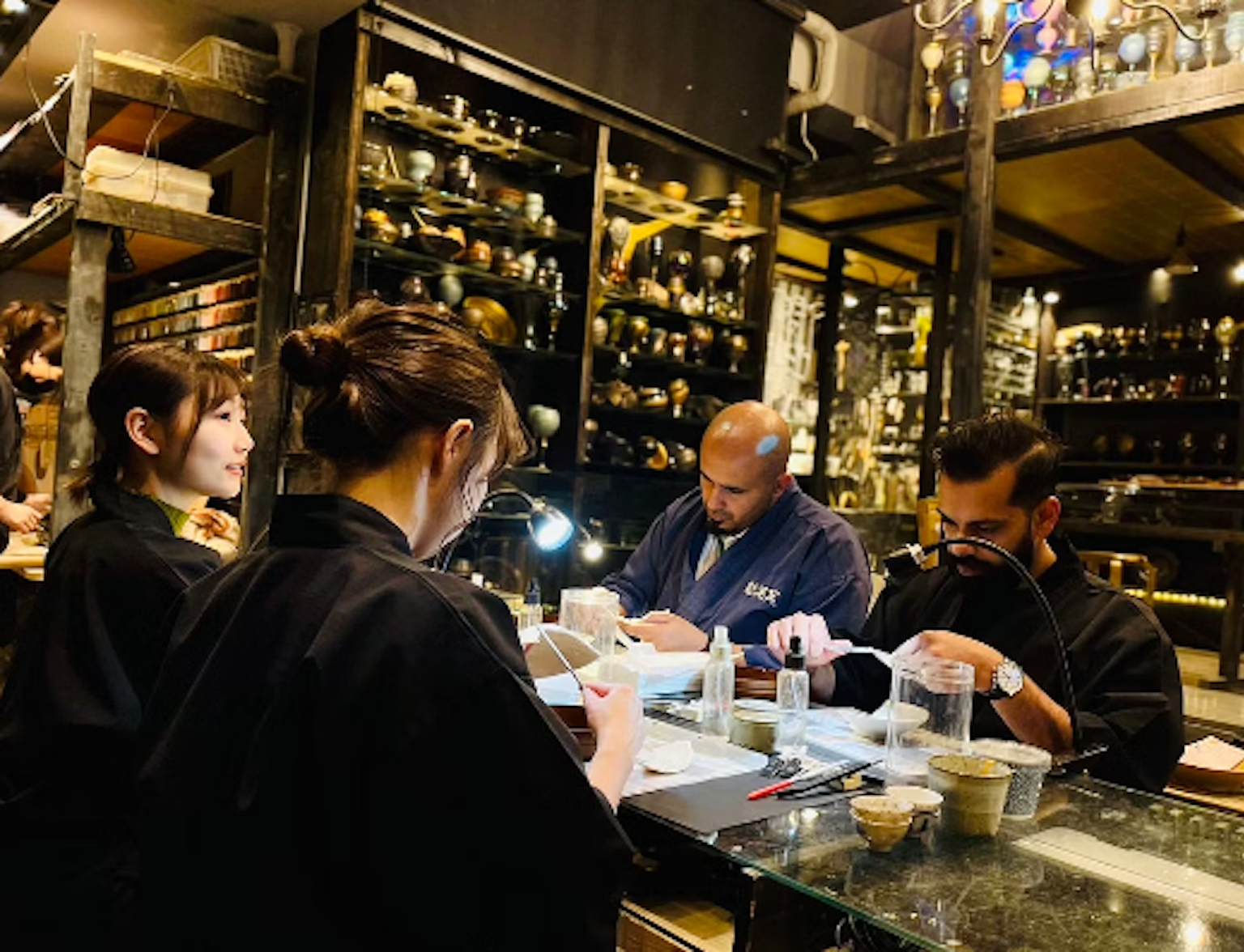
Discover the timeless art of Kintsugi with Master Taku in Tokyo.
The Kintsugi technique involves mending the broken pottery pieces with a special lacquer mixed with powdered gold, silver, or platinum. This method transforms the cracks into striking features, enhancing the beauty of the object with golden veins. The process is time-consuming, requiring patience and precision - an act of mindfulness that echoes the Zen ideals of concentration and care.
Every Kintsugi repair is unique, reflecting the unpredictability of the break and the artisan's hand. The result is a revitalized ceramic piece that symbolizes life's fragility and strength, embodying a rebirth and rendering it more valuable than its unbroken predecessor. Kintsugi teaches us to embrace imperfections and honor our history - a golden testament to survival, endurance, and the art of embracing life's unexpected turns. It reminds us that in life, as in art, breaks, cracks, and mends are not the end, but a new beginning.
One of the best ways to truly appreciate Japanese pottery is to get your hands dirty. Whether you're an ardent ceramic enthusiast or a casual traveler seeking a unique cultural experience, engaging in a pottery class or studio visit will immerse you in the rich world of Japanese ceramics. These activities offer a firsthand understanding of ancient techniques, skillful craftsmanship, and the philosophy that transforms a humble lump of clay into a piece of art.

There's something undeniably enchanting about the tactile experience of molding clay on a potter's wheel or painting intricate designs onto a ceramic piece. And in Japan, there's no shortage of places to dive into pottery, from the historic kilns of Seto and Bizen to the pottery-centric neighborhoods of Tokyo and Kyoto. This hands-on exploration not only creates beautiful keepsakes of your journey but also provides a deeper connection to Japanese culture and its artistic heritage.
Kyoto, the cultural capital of Japan, is an ideal place to embark on your pottery adventure. The city, renowned for its historic temples, traditional tea ceremonies, and vibrant arts scene, also boasts an array of pottery studios offering classes for all levels. It is here, amid the old-world charm of Kyoto, that the traditional craft of Kyo-yaki or Kiyomizu-yaki was born. Known for its elaborate designs and vibrant colors, Kyo-yaki is closely linked to the city’s cultural and historical identity.
Immersing yourself in a Kyoto pottery class, you will be guided by skilled artisans who are eager to share their knowledge and passion. You can choose from a variety of activities: from throwing your pot on a wheel to hand-building techniques, from underglazing to overglazing. Each class provides a rich sensory experience and an insight into the traditional Japanese pottery process. With your finished piece, whether it's a simple bowl, a delicate tea cup, or a decorative ornament, you'll carry a piece of Kyoto's pottery tradition with you.
In the world of Japanese pottery, the tea bowl holds a place of special significance. These vessels, used in the revered Japanese tea ceremony, are crafted with great care and artistic insight, embodying the spirit of "ichigo ichie" - a concept emphasizing the singularity of each moment. Creating your own tea bowl is not just a fun, hands-on experience but also an insightful exploration of Japanese culture.
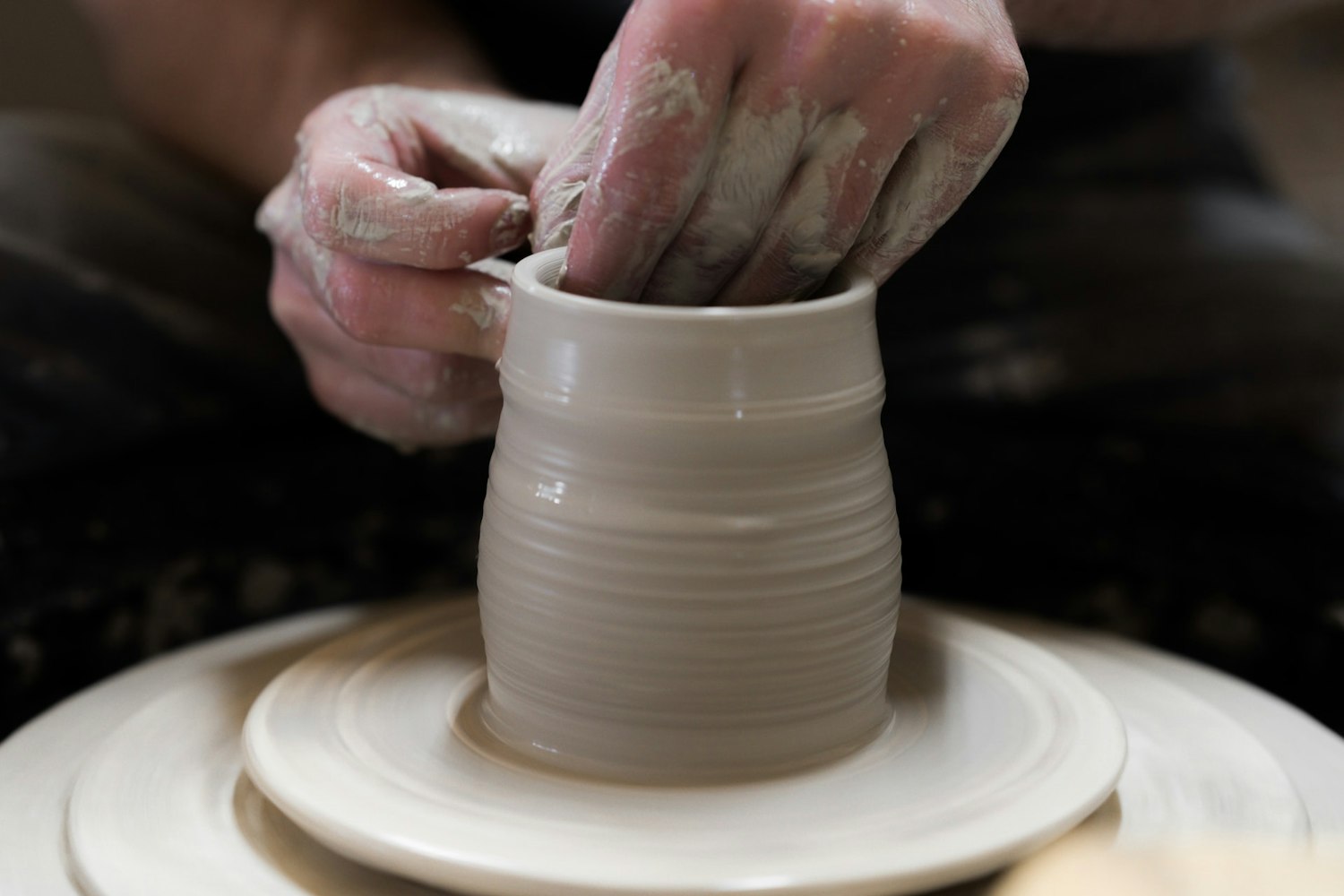
In a tea bowl-making class, you'll learn to form, trim, and glaze a bowl that fits comfortably in your hands and pleases your eyes - a lesson in practicality and aesthetics. The instructors guide you through the process, helping you imbibe the philosophy that each bowl is a unique expression of the potter's soul. By the time your creation emerges from the kiln, you will have experienced a taste of Japan's ceramic arts' meditative nature. More than just a functional object, your handmade tea bowl will serve as a personal keepsake that evokes memories of your journey into the captivating world of traditional Japanese pottery.
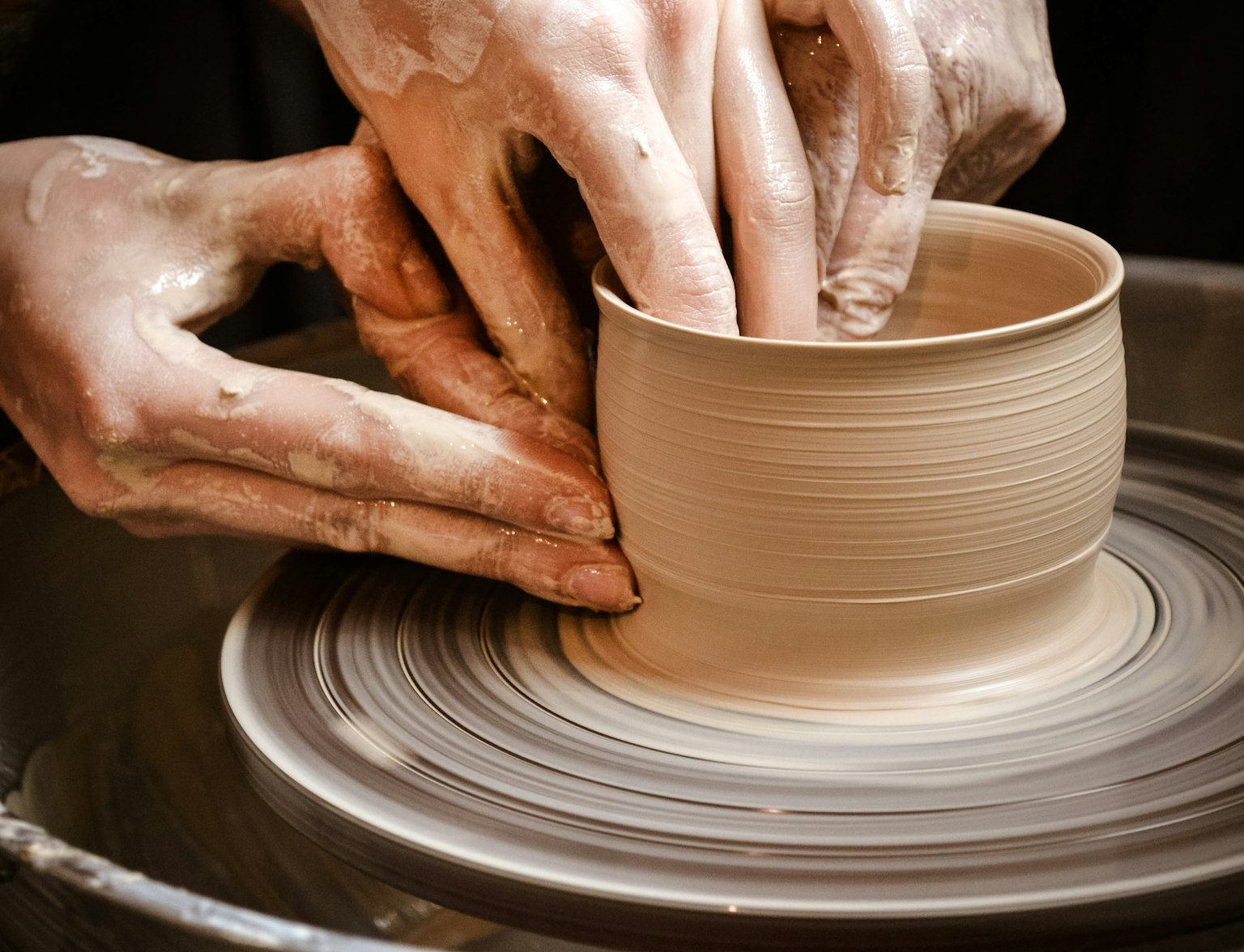
Explore the timeless art of Japanese pottery in Tokyo's Omotesando neighborhood.
No exploration of traditional Japanese pottery is complete without a venture into the numerous shops and markets selling these exquisite pieces of art. From intricate tea sets and unique dinnerware to ornamental objects and kitchenware, each ceramic piece reflects the spirit of its maker and the region it originates from. Shopping for pottery in Japan is not just about acquiring objects; it's about discovering stories, embracing traditions, and creating connections.
With each region boasting its own characteristic styles, colors, and techniques, your pottery shopping experience becomes a treasure hunt. Every piece you select, be it a rustic Bizen ware or a vibrant Kyoto ceramic, becomes a tangible keepsake of your journey, a unique memento that holds the spirit of its creation. Whether you are a collector seeking exceptional pieces or a traveler looking for authentic souvenirs, the pottery shops of Japan are sure to leave you enamored.
Kanazawa, located in the Ishikawa Prefecture, is known for its rich cultural heritage and is a must-visit for pottery enthusiasts. The city, famous for its traditional arts and crafts, is home to Kutani-yaki, a style of pottery distinguished by its bold, colorful designs and overglaze painting techniques. The intricate designs of Kutani ware, often depicting landscapes, flora, and fauna, are a testament to the high level of craftsmanship in Kanazawa.
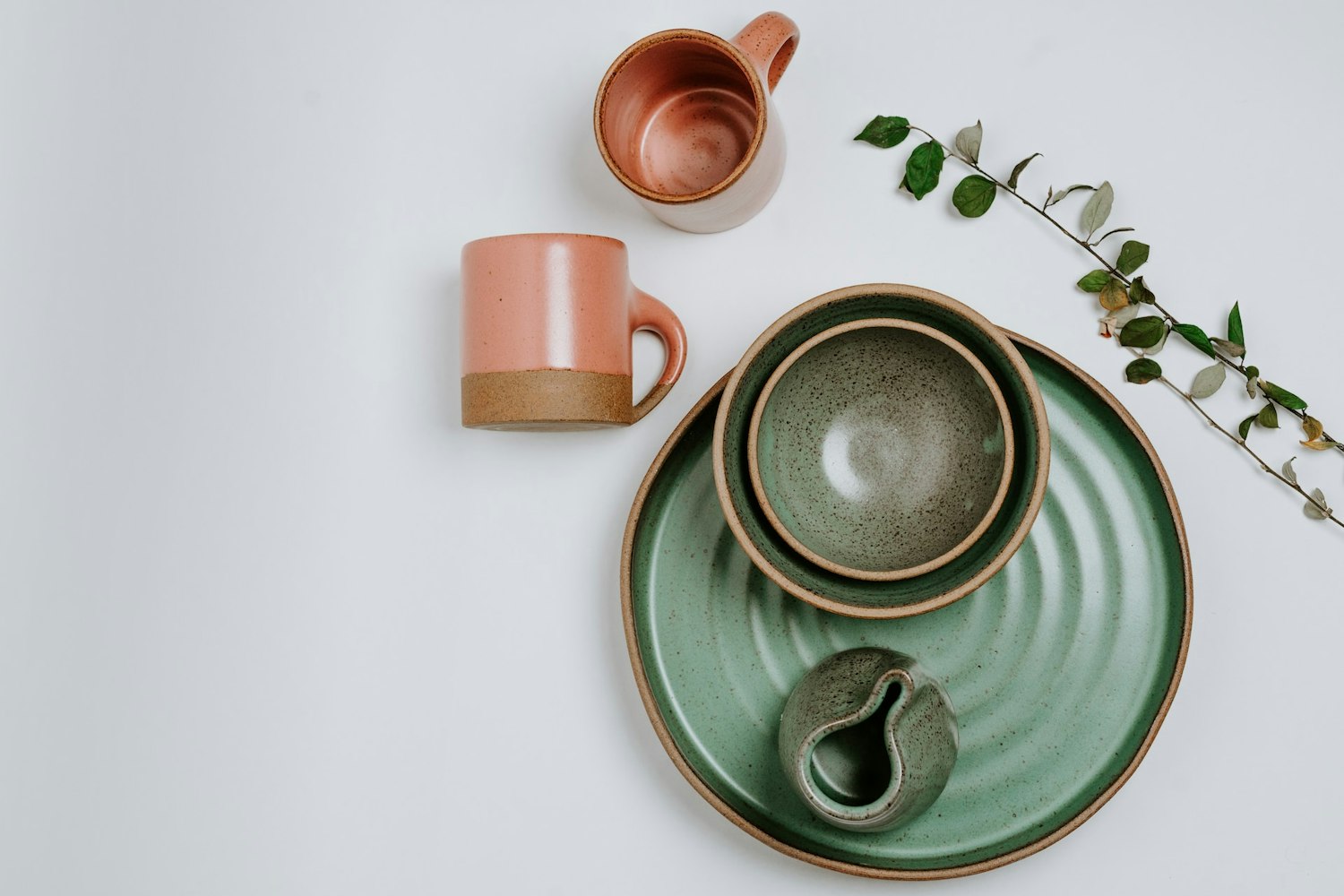
As you wander through the charming streets of Kanazawa, you'll come across numerous pottery shops showcasing an array of Kutani ware. From traditional designs to contemporary interpretations, there's something to suit every taste. Many of these shops are located near the city's historic districts, offering a delightful combination of sightseeing and shopping. Do not miss the opportunity to visit the Kutaniyaki Art Museum to view historic pieces and understand the evolution of this art form.
For those who love to cook or admire beautiful kitchenware, a visit to Kappabashi Street in Tokyo is an absolute must. Often referred to as 'Kitchen Town', Kappabashi is a paradise for chefs and home cooks, with shops selling everything from high-quality knives and pans to traditional Japanese ceramics.
Walking down the street, you'll find a selection of ceramic shops that feature an array of bowls, plates, cups, and other kitchenware, crafted in various regional styles of Japanese pottery. Whether you're in search of a beautifully glazed ramen bowl, a delicate sake set, or a sturdy donabe (clay pot), Kappabashi offers something for everyone. While shopping, you're not just acquiring functional kitchenware but also bringing home a piece of Japanese culinary tradition, adding a touch of Japanese aesthetics to your everyday meals.

Explore Kappabashi in Tokyo with two wheels.
One of the most captivating ways to engage with Japanese pottery is by attending the country's pottery fairs and festivals. These vibrant events offer a lively atmosphere where you can see a vast array of pottery styles, meet talented artists, and even get your hands on some unique pieces. These festivals are not only a marketplace but a celebration of the rich ceramic tradition, embodying the energy, creativity, and community spirit around this art form.
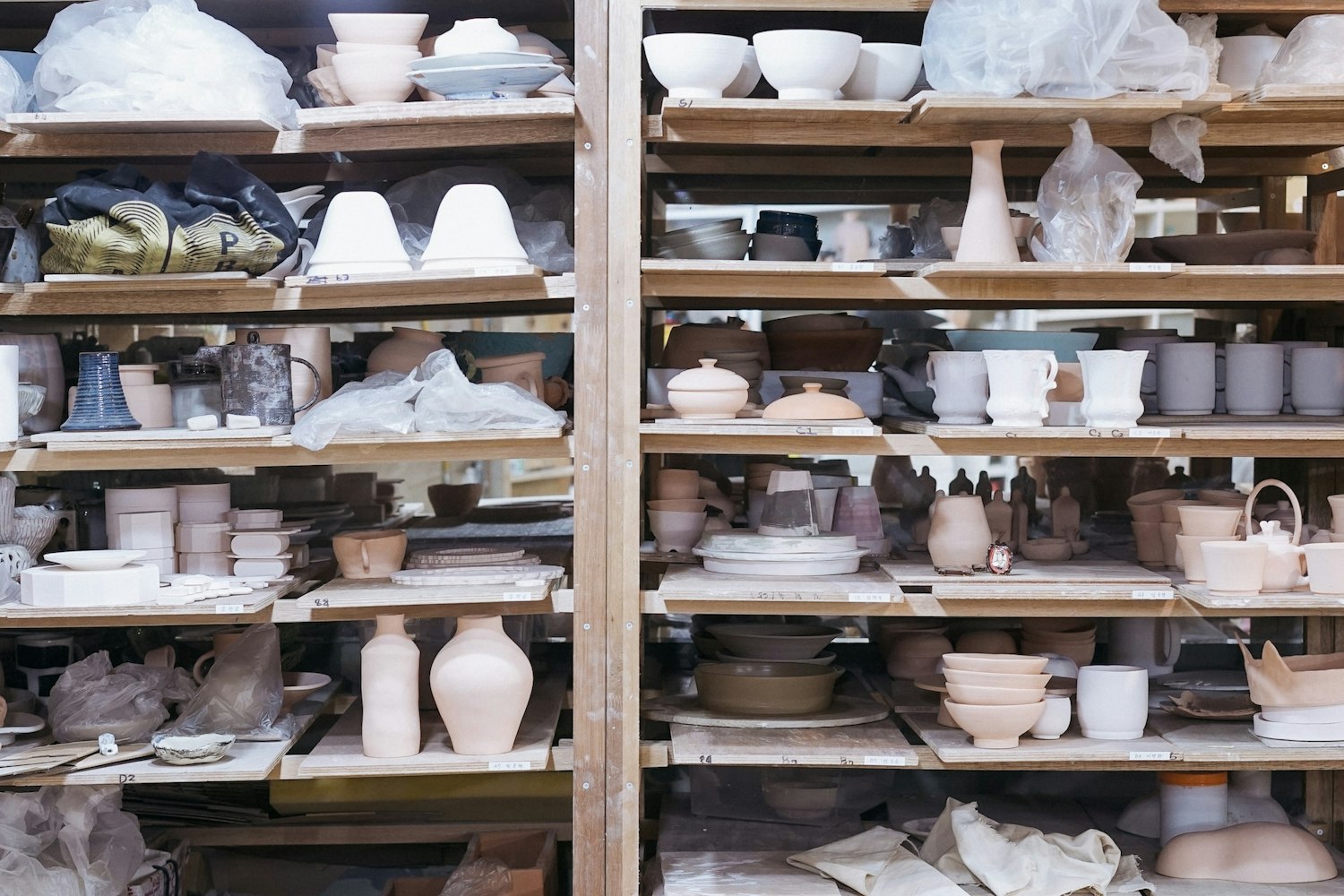
Japan's pottery festivals offer a unique experience, where the love for ceramics extends beyond just collecting. You can observe demonstrations by skilled potters, participate in pottery classes, and even try your hand at the wheel. With pieces ranging from everyday tableware to elaborate artistic creations, these festivals are sure to ignite your admiration for Japanese pottery, whether you're a seasoned collector or a novice admirer.
Twice a year, the small town of Mashiko, located in Tochigi Prefecture, becomes a bustling hub for pottery enthusiasts. Known for its rustic Mingei-style pottery, Mashiko hosts one of the most significant pottery events in Japan - the Mashiko Pottery Fair. The festival attracts hundreds of potters from across the country and thousands of visitors looking to explore the world of ceramics.
The fair is an exciting opportunity to discover and purchase a wide range of ceramics in various styles and prices. The streets of Mashiko come alive with countless stalls, exhibiting everything from traditional pieces to innovative designs. What makes the Mashiko Pottery Fair unique is the chance to interact directly with the artists, learn about their techniques, inspirations, and stories. This direct connection adds a personal touch to each piece you take home, making the Mashiko Pottery Fair a truly memorable experience.
The Mino Ceramic Festival, held in Tajimi City in the Gifu Prefecture, is another significant event that attracts ceramic lovers from all over Japan and beyond. The city is renowned for Mino ware, one of Japan's most famous traditional ceramics, with a history dating back over 1,300 years. The Mino ware is known for its elegance, simplicity, and variety of styles, including the renowned Shino and Oribe ware.
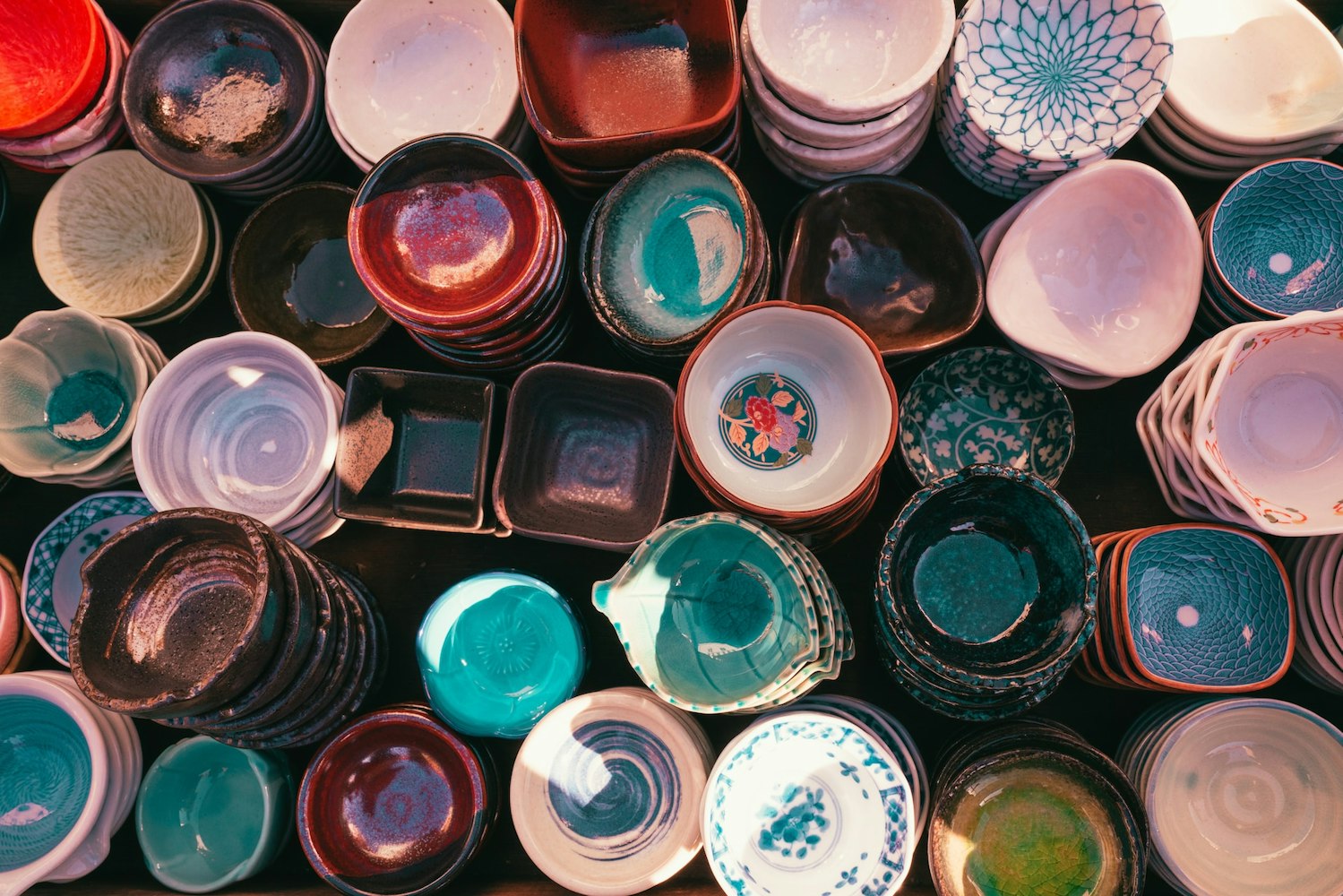
The Mino Ceramic Festival is a haven for pottery enthusiasts, featuring thousands of stalls by local potters and ceramists from all over the country. The festival offers a plethora of styles, from antique pieces to modern creations, suitable for a variety of budgets. Beyond shopping, the festival also hosts the International Ceramics Festival Mino, Japan, a competition that draws artists worldwide and features innovative ceramic art pieces. The Mino Ceramic Festival is an incredible platform to witness the diversity and depth of Japanese ceramics and an unforgettable addition to your pottery journey in Japan.
Immersing yourself in the world of traditional Japanese pottery is akin to stepping into a time machine. Each piece, each style, each technique tells a story of Japan's rich cultural heritage and the generations of craftsmanship that have refined this art form. From the six ancient kilns, each carrying a unique legacy, to the elegant practice of Kintsugi that teaches us to celebrate imperfection; from hands-on pottery classes that let you mold your memories, to vibrant pottery fairs that celebrate the community spirit - every aspect of this journey offers a deeper understanding and appreciation of Japanese culture.
As a gateway to these experiences, our team at "Trip to Japan" is dedicated to providing you with unforgettable tours that not only showcase the beauty of Japanese pottery but also weave you into its rich tapestry. Whether it's your first visit to Japan or a return trip, we invite you to explore our range of tours and tailor your perfect journey. We promise an adventure that brings to life the traditional artistry of Japan and sparks a lifelong appreciation for its ceramic heritage. Visit our website today and embark on your personalized exploration of the captivating world of traditional Japanese pottery. Your unique journey awaits!
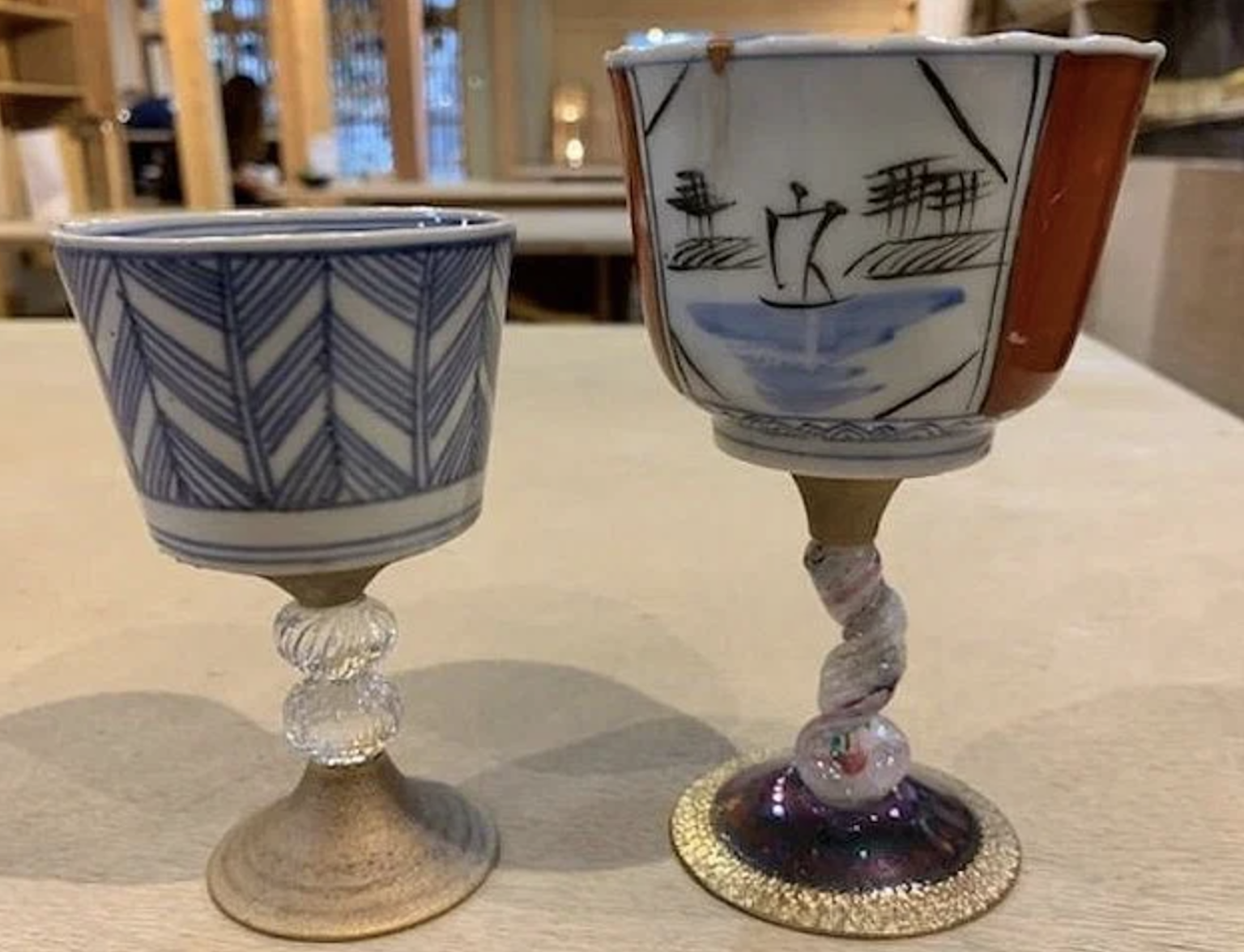
Craft your wine glass, merge past and present, and take home more than just memories.



